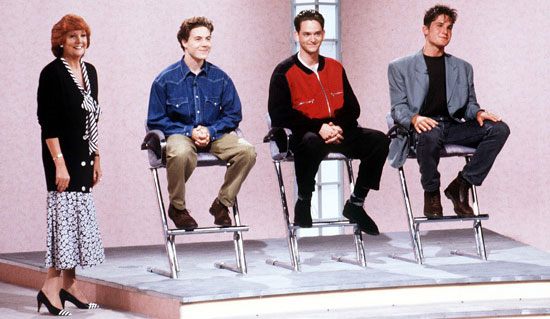I love choices. But like most things, they suffer from the law of diminishing returns, or more accurately the laws of ‘diminishing marginal utility.’ The web of today (and tomorrow) is a web of choice. Almost limitless storage and the ease of publication means that there is more and more content out there to choose from. Functionally rich interfaces also run the risk of splitting the attention of the user – even the choice of where to look first or next can sometimes be a tricky one. We’ve firmly pinned the long tail on packhorse websites that can groan under the weight of their ‘options’. But how can information architecture manufacture optimal choices? How can we trim the tail, to ensure that every choice offers the perfect balance of variety and relevance?
Choice paralysis
Less is more. It isn’t of course, that’s why we have different words for the two concepts. But presenting less information is always preferable to overwhelming our audience with an exhaustive list of choices. Choices are difficult and stressful. Every time we’re presented with a choice we need to make mental calculations, predictions and justifications. We need to measure our preferences against the imagined consequences of the alternatives. We need to think.
And thinking is tricky. It requires effort, and effort requires motivation. In any decision-making process we’re not only choosing between the alternatives, there’s also a subconscious decision being made about whether the effort required to make the choice is worth it. There’s a magic line that marks the point of division between increasing and diminishing returns. It marks the point at which more choices are detrimental to the decision making process, because the effort to choose between alternatives outstrips the motivation any perceived outcome is able to generate. As Barry Schwartz argues in The Paradox of Choice there are just some instances when choice no longer liberates, but debilitates.
We can never forget that as soon as we cross that magical line of diminishing returns, the most attractive option is likely to be to ignore the rest and walk away from the decision. In the web this is especially true – no matter how elegant and attractive our interface, there’s usually a little ‘close’ icon lurking somewhere that can make the pressure of the decision go away.
The motivation of scarcity
The challenge to information architects is to make use of the long tail – truly turning the potentially endless choice of the web into limitless demand. Because it’s almost as if there are two types of choices – good and bad. Good choices empower a user. Bad choice can overwhelm, underwhelm, marginalise or just confuse people. We need to find a recipe to construct good choices.
Part of the recipe is probably limiting the ingredients. Limiting options has advantages, not least because scarcity is attractive. This is why people like antiques, why retailers shout about stocks running low and why Disney eventually settled on there being no more than seven dwarves. Conveying scarcity is a trick that marketers have been using for years, and it’s something that information architects could learn from. Engineering scarcity in our interfaces might be the way to increase motivation and get those clicks we all crave.
But there’s another important element to the psychology of choice we should keep in mind. Choosing initiates introspection – it speaks to the individual. The process of measuring your preferences to the available options makes you think about you as an individual – whether consciously or subconsciously.
So choices can be hugely empowering. At these moments within the user experience we can remind our audiences that they’re in charge of the interface, they’re driving it. We need to reassure the user that they’re volitional agents. This means we give them the controls, and we ensure that every important choice is an informed choice.
Information architecture is partly about the management and presentation of information, a big part. Nowhere is this more important than in the choices we construct in our interfaces. Informed choice depend on the presentation and access to information. So here is yet another argument to limit the number of options we present. We all know that too much information can overwhelm an interface and an experience. By limiting the options we limit the amount of information we need to cram into the interface.
So progressive disclosure doesn’t just make sense from a usability point of view, it also helps to tap into this psychology of choice. Of course, if we’re presenting fewer choices to each individual, and choices initiate introspection, the pressure to make sure the alternatives are the right ones increases. This ‘good choice’ recipe might require the addition of some personalisation technologies.
Designing optimal choices
Designing choices (just like most of information architecture) requires us to focus on two things – our content and our users. I think it makes sense that once we have a good understanding of our users, we take some of the pressure out of choosing, insulating the user from additional stress and otimising our interfaces. If we can learn enough about our users, and we assume we already know enough about out content, we’re in a much better place to construct the optimal choice. Through (linked) data we can always be more informed than our users. We can use this knowledge to construct the perfect array of options, passing our power on to the user. The easiest decisions to make is when something just feels right – maybe through clever information architecture we can make every choice feel like that.
The best kind of choices are informed choices – and the less options you present, the less information you have to convey to differentiate the options. A good UXA can describe content and understand audiences. Good information architecture allows a UXA to remove options with the certainty that they’re presenting the perfect choice for every user.

Leave a Reply